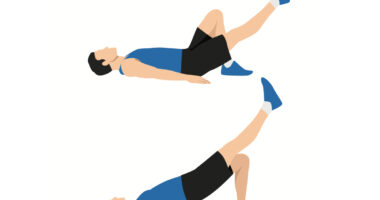Though it’s commonly thought that only women can get yeast infections, this isn’t actually true. Men can get yeast infections, too, though they’re much less common.
Yeast is a type of fungus that naturally lives on your skin and inside your mouth. When the conditions are right, the yeast can grow out of control. This can cause a number of uncomfortable symptoms, like itching, redness, and burning.
If you think you might have a yeast infection, it’s important to see a doctor so they can diagnose and treat the infection. In the meantime, there are a few things you can do to ease your symptoms at home.
What is a yeast infection?
According to MedicalNewsToday, a yeast infection is a common type of fungal infection. It can affect various parts of the body, but is most commonly found in the vagina. Yeast infections are caused by an overgrowth of Candida albicans, a type of yeast that naturally occurs in the body.
Symptoms of a vaginal yeast infection may include itching, burning, and redness in the vaginal area. Other symptoms may include burning during urination, thick, white vaginal discharge, and pain during intercourse.
Yeast infections are treated with antifungal medications. These can be taken orally or vaginally as creams or suppositories.
How do you get a yeast infection?
Yeast infections are caused by an overgrowth of the yeast fungus Candida. Candida normally lives in small numbers on the skin and in the mouth, gut, and vagina without causing any problems. However, if the balance of microbes in the body is disrupted, Candida can multiply and cause infection.
There are a number of things that can disrupt the microbial balance in the body and lead to a yeast infection. These include:
– Taking antibiotics, which kill both good and bad bacteria
– Having a high sugar diet, which feeds yeast
– Wearing tight synthetic clothes that don’t allow air circulation
– Poor hygiene
– Having a suppressed immune system
If you think you have a yeast infection, it’s important to see your doctor or gynecologist so they can diagnose and treat you.
What are the symptoms of a yeast infection?
There are a few symptoms that may point to a yeast infection, especially if you experience them frequently or have more than one at a time. These can include:
-Itching and burning in the affected area
-Redness and swelling
-Pain during urination or sex
-A thick, white discharge that looks like cottage cheese
-Burning while urinating
If you experience any of these symptoms, it’s important to see your doctor so they can confirm whether or not you have a yeast infection.
What are the treatments for a yeast infection?
There are a few different ways that people commonly treat yeast infections. The first and most common way is to use an over-the-counter antifungal cream, such as Monistat. These creams can be applied directly to the affected area and typically provide relief within a few days.
Another common treatment is to take an oral antifungal pill, such as fluconazole (Diflucan). This medication is taken once a day for several days and is generally effective in treating yeast infections.
For more severe or chronic yeast infections, your doctor may prescribe a longer course of antifungal medication, such as amphotericin B. This medicine is usually given by IV infusion in a hospital setting.
In some cases, your doctor may also recommend removing the entire infected area of skin. This can be done through surgery or topical medications.
Can men have yeast infections?
Yes, men can get yeast infections. Though not as common as they are in women, men can develop yeast infections. The infection is usually on the skin on the penis, but it can also be in the urinary tract or elsewhere in the body. Symptoms include itching, redness, and a burning sensation. Treatment involves antifungal creams or oral medications.
Conclusion
Although it is much more common for women to experience yeast infections, men can get them too. In fact, any human being with a vagina or penis can get a yeast infection. While the symptoms may be different for each gender, the causes are often the same. If you think you may have a yeast infection, it is important to see a doctor so that they can prescribe the appropriate treatment.
Also, learn about | Types of fungal infections
References
1. Veterans Health Administration. (2012). Women’s Health: Vaginal Yeast Infections. https://www.prevention.va.gov/docs/womens-health-guide/vaginal-yeast-infection.pdf
2. New York State Department of Health. (2019). Yeast Infection. https://www.health.ny.gov/publications/3833.pdf









